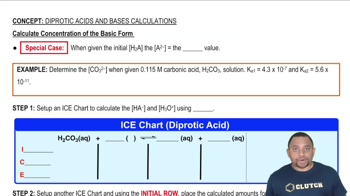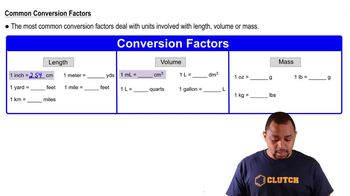Here are the essential concepts you must grasp in order to answer the question correctly.
Concentration
Concentration refers to the amount of a substance (solute) present in a given volume of solution. It is often expressed in units such as grams per milliliter (g/mL) or moles per liter (mol/L). Understanding concentration is crucial for calculating the total amount of solute in a larger volume, as it allows for the conversion between the concentration of a solution and the total mass of the solute present.
Recommended video:
Calculate Concentration of the Basic Form
Volume Conversion
Volume conversion is the process of changing a measurement from one unit of volume to another, such as from liters to milliliters. In this context, knowing that 1 liter equals 1,000 milliliters is essential for accurately calculating the total amount of dissolved gold in the oceans. This conversion is necessary to align the units of concentration with the total volume of the oceans.
Recommended video:
Common Conversion Factors
Mass Calculation
Mass calculation involves determining the total mass of a substance based on its concentration and the volume of the solution. In this scenario, the mass of dissolved gold can be calculated by multiplying the concentration of gold (in g/mL) by the total volume of the oceans (converted to mL). This fundamental principle of stoichiometry is vital for quantifying substances in chemistry.
Recommended video:
Molar Mass Calculation Example
 Verified step by step guidance
Verified step by step guidance


